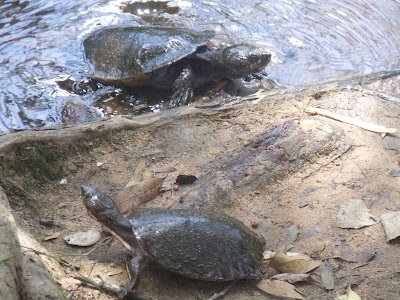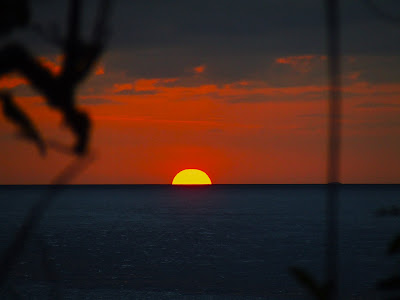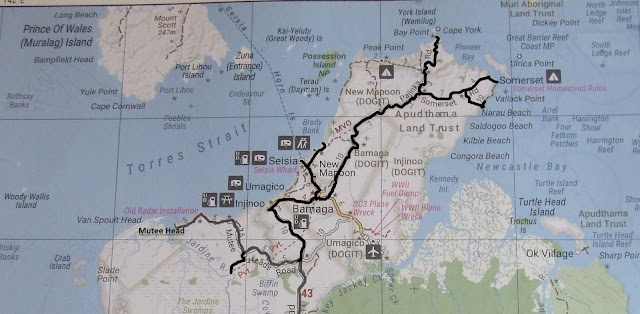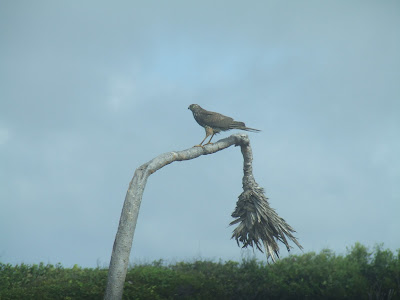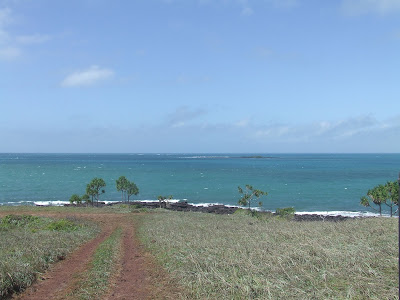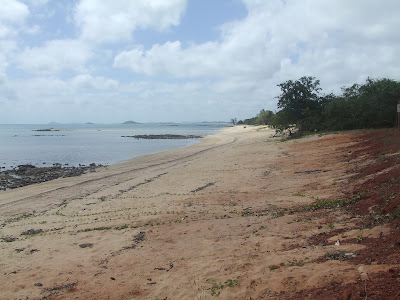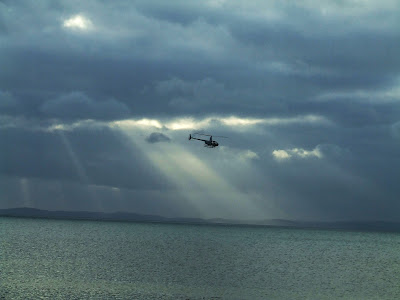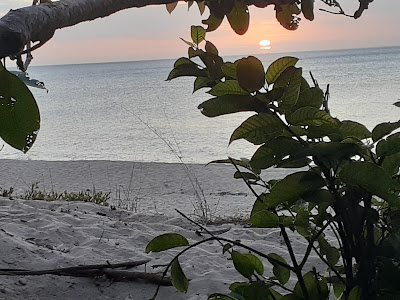With some reluctance, we again broke camp and went into Bamaga to resupply for our return journey down the cape.
Just before the Jardine ferry, a track goes close by the river, we followed it, as we do. There was evidence of it once being blocked off, as in a barricade lying on the ground. We continued, being prepared to turn back if necessary. About half way down we came to a huge washout in the track, obviously the reason for the broken down barricade. There was a bypass track around, a bit tight and rough, but I considered it doable, around we went. The dip we had to negotiate had a steep departure and the tow bar dug into the base of the dip on the way out, threatening to leave us stuck, but Ned grunted, lurched, and heaved himself free. Huge anthills are all over here, standing proud against the elements. A few tight turns, and we were back on track again.
Made the ferry for one of the last crossings for the day, we considered camping on the bank and crossing the next day, but the fly's there were gathering in droves, so we decided to cross and camp up the road a bit. Boarding the ferry, we waved to the operator and he threw it into gear and hauled us to the opposite bank. An old roadworks quarry, not far up the road, was our stop for the night.
30k south of the ferry was the picture plant creek camp we found on the way up, so next day we set our sights on there. Arriving, we were glad to see it deserted. Quickly setting up camp, we felt at home at our little oasis again. During the day, as we sat and watched the crystal clear water cascade over the small waterfall, a freshwater turtle glided by, gracefully sailing from the depths of the small pool to the surface and poking his head out for a breath of air.
Soon he was joined by two others, they effortlessly floated about poking here and there looking for a tasty morsel to pounce on. When they noticed that they were not alone, they didn’t seem to perturbed, the bigger one would surface close to the bank and have his head out of the water and quite intently stare into our eyes.
Din soon had some mince out and threw them bits. They would scramble to the mouthful and had to fight for it with the several small fish who honed in on it too. We were surprised we didn’t notice them last time we were there, maybe we were too busy looking at the wonderful plant life surrounding the creek and didn’t notice the aquatic inhabitants.
They, however got our attention this time, being unafraid, but cautious, they would come to the small pool each day from further up the creek, and frolic about, stopping at times for a breath and stare at us saying hello. With water so clear, a sandy bottom scattered with fallen leaves, they were easy to observe, playing out their daily lives, foraging and interacting with each other.
Also, while observing the goings on in the creek, a ulissies butterfly alighted on an overhanging branch, it’s large wings pulsing, revealing flashes of brilliant blue as it rested. Unfortunately, it fluttered off out of sight before I could get the camera. Another special time spent communing with nature in all her glory.
We spent six days there, observing the turtles and relaxing, cooking bread, another roast, a cake, enjoying the solitude. However, we couldn’t stay forever, so the day came when we broke camp and headed south.



